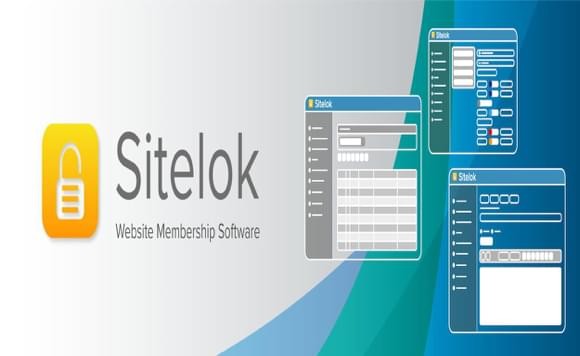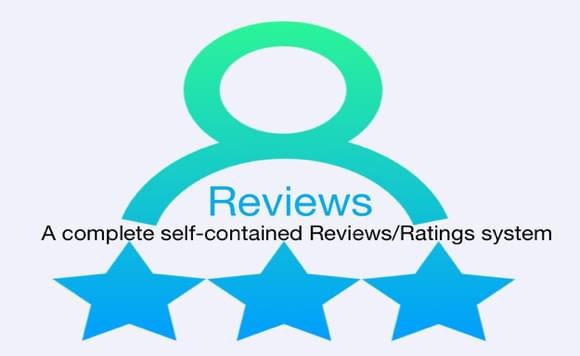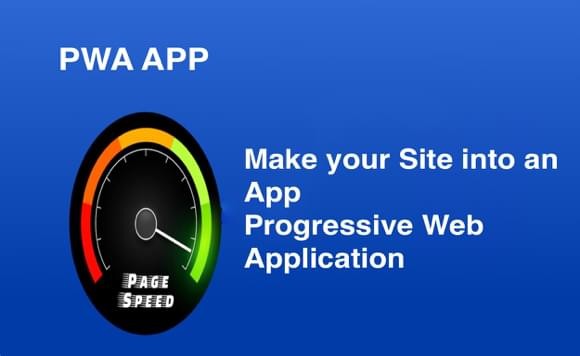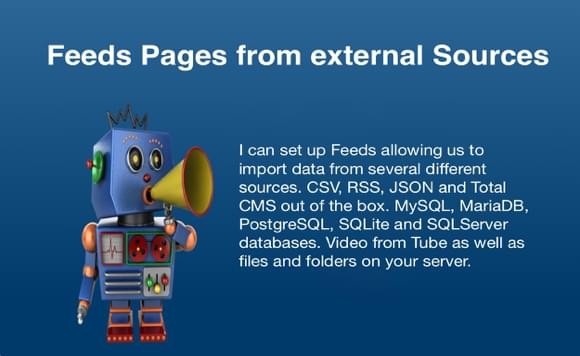- Why not to use WordPress
While WordPress undoubtedly has its advantages and is a popular choice for many website owners, it's essential to consider the potential drawbacks before committing to it. Here's a summary of the points made in your provided text:
1. Appearance: With WordPress being so widely used, there's a risk of your site looking similar to many others, potentially impacting its uniqueness.
2. Malware: WordPress sites can be vulnerable to malware and online threats, necessitating measures like antivirus plugins, which may add to costs.
3. Set-Up/Maintenance: While WordPress is user-friendly, setting up a site still requires some learning, including purchasing a domain and web hosting. Maintenance and ensuring site security also require effort and possibly additional costs.
4. Compatibility and Credibility of Plugins: The credibility and compatibility of WordPress plugins can be uncertain, potentially posing security risks or compatibility issues.
5. Hosting: Ensuring the security of the server hosting your WordPress site is essential, as vulnerabilities can be exploited by attackers.
6. Strictly a Blog Platform: While WordPress has evolved beyond its origins as a blogging platform, its core functionality remains rooted in blogging, potentially limiting its suitability for other types of websites.
7. Limited Functionality: WordPress may have limitations in terms of scalability and functionality, particularly for complex business operations.
8. Speed: Speed issues can arise due to factors such as poor hosting, outdated plugins, and large file sizes, impacting user experience.
9. SEO Challenges: While WordPress can be SEO-friendly, optimising it for search engines may require ongoing effort and attention to various factors.
10. Configuration Challenges: Users may encounter configuration issues that affect the site's production and performance, such as email delivery failures or permalink settings.
Ultimately, the decision to use WordPress should be based on a thorough evaluation of its pros and cons, considering factors such as your specific needs, budget, technical proficiency, and willingness to manage potential challenges. While WordPress is a popular and versatile platform, it may not be the best fit for every website project.
What we can do for you
- What Do WE use to Build your WebSite

Foundation
Flexible. Powerful. Fast. Build your own theme using Stacks Drag and drop builder for the most advanced responsive front-end framework in the world. Foundation is a powerful and flexible framework that will empower you to build better websites than you've ever created before. Foundation 6 uses the latest web technologies to skyrocket your site into the modern era. Not to mention that it's built for speed! Faster Websites The output of your published site is a fraction of what it used to be. The entire Foundation framework is smaller than a single image. Mobile First F6 continues blazing trails with mobile-first design. This ensures that your websites are usable by visitors from all devices. Clean HTML The HTML code published by Foundation is indistinguishable from a hand-coded site. It reduces the amount of HTML published by approx. 70%. This will definitely increase Page Speed scores. Centralised Styles Site Styles provides you with a single place to manage your styles for your web pages. This will help ensure that we have consistent styles for your brand across the entire website. A11Y Compliant Accessibility is a hot topic right now. Ensuring that our websites are A11Y/Aria compliant is vital. Foundation 6 components and forms are coded for accessibility so you no longer have to worry. Powerful Forms Foundation forms ship with 15 different field types to build our your forms. It has super flexible layouts. And they are 100% A11Y compliant. Flexible Menus Menus are an important part of any website. F6 menus are fully customisable to ensure that the menu fits right at home in your designs. Google Fonts Choose from over 1000 fonts from Google Fonts. Easily load them onto your websites and assign them to any text you like. FA5 Pro Every website built with Foundation 6 comes with a license for Font Awesome 5 Pro to use within your designs. This gives you access to over 2000 stunning SVG icons. Extensible There is a power styles API under the hood with F6. If you are a developer that would like to integrate your product with Foundation's styles, please contact me.
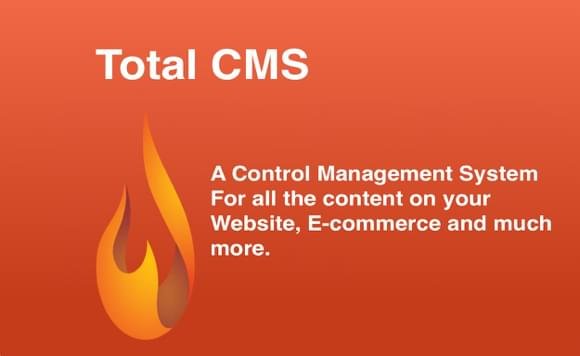
Total CMS
Total CMS is priced per domain so that it provides you with the best value for each of your projects. No Database Just publish and go! Total CMS is 100% flat file-based and does not require any database of any kind. Edit Content Anywhere As long as you have an internet connection, you can edit Total CMS content anywhere in the world. Edit from Any Device Edit your site content from any device. You can even take photos with your phone and upload them directly to your website. File Downloads Upload files directly into the CMS to be used as resources in the site or for file downloads. Blogs You get an extremely flexible and powerful blogging engine. Create as many blogs as you want. Galleries Don't rely on external services, that you have no control over, to manage your galleries. Upload your images directly into Total CMS.
CMS stands for Content Management System. It's a software application or set of related programs that are used to create and manage digital content. CMS platforms are typically used for websites or blogs where multiple users may need to contribute, edit, and organise content without requiring specialised technical knowledge. Key features of CMS platforms include:
1. Content Creation and Editing: Users can create, edit, and publish content such as articles, blog posts, images, and multimedia without needing to know HTML or other coding languages.
2. User Management: CMS platforms allow administrators to manage user roles and permissions, determining who can create, edit, publish, or delete content.
3. Workflow Management: Many CMS systems support workflow processes, allowing content to go through review and approval stages before publication.
4. Version Control: CMS platforms often include versioning functionality, enabling users to track changes made to content over time and revert to previous versions if needed.
5. Template-based Design: CMS platforms typically use templates or themes to control the design and layout of a website, making it easier to maintain consistency across pages.
6. SEO Tools: Some CMS platforms offer built-in SEO tools or plugins to help optimise content for search engines, including features like meta tags, sitemaps, and URL customisation.
7. Plugin and Extension Ecosystem: Many CMS platforms support plugins or extensions, allowing users to add additional functionality such as e-commerce, social media integration, or analytics tracking.
8. Security: CMS platforms often include security features to protect against unauthorised access, malware, and other threats. This may include user authentication, encryption, and regular software updates.
- Search Engine Optimisation

Search Engine Optimisation
SEO stands for Search Engine Optimisation. It refers to the practice of optimising a website or online content to improve its visibility and ranking in search engine results pages (SERPs). The ultimate goal of SEO is to increase organic (non-paid) traffic to a website by making it more relevant and authoritative to search engines like Google, Bing, and Yahoo. Key components of SEO include: 1. Keyword Research: Identifying the terms and phrases (keywords) that users are searching for related to your content or business. This involves understanding search intent and competition for specific keywords. 2. On-Page Optimisation: Optimising individual web pages to improve their relevance to target keywords and enhance user experience. This includes optimising title tags, meta descriptions, headings, URL structures, and content quality. 3. Off-Page Optimisation: Building backlinks (links from other websites) to your site to increase its authority and credibility. Off-page SEO also involves strategies like social media marketing, influencer outreach, and online reputation management. 4. Technical SEO: Optimising the technical aspects of a website to improve its crawl-ability, index-ability, and performance. This includes optimising site speed, mobile-friendliness, website architecture, URL structure, and implementing structured data markup. 5. Content Creation and Optimisation: Producing high-quality, relevant, and engaging content that satisfies user search queries and provides value. Content optimisation involves incorporating target keywords naturally, creating comprehensive and informative content, and updating content regularly. 6. User Experience (UX) Optimisation: Ensuring that your website provides a seamless and intuitive user experience across devices. This includes optimising site navigation, improving page loading times, minimising intrusive ads, and optimising for mobile responsiveness. 7. Local SEO: Optimising your website and online presence to rank better in local search results. This involves creating and optimising Google My Business listings, local citations, and getting positive reviews from customers. 8. Analytics and Monitoring: Tracking and analysing website traffic, keyword rankings, and other relevant metrics using tools like Google Analytics and Google Search Console. This data helps identify areas for improvement and measure the effectiveness of SEO efforts. SEO is an ongoing process that requires continuous monitoring, adjustment, and adaptation to changes in search engine algorithms and user behaviour. While SEO can be complex and time-consuming, it's a crucial aspect of digital marketing for businesses looking to attract organic traffic and grow their online presence. "BLOG" stands for "weblog." It is a type of website or part of a website where entries are written in chronological order and commonly displayed in reverse chronological order. Blogs often provide commentary or information on a particular subject, such as news, politics, hobbies, or personal interests. They typically allow readers to interact through comments and may include multimedia content such as images, videos, and links.
- BLOGS
Blogs have become a popular platform for individuals, businesses, organisations, and professionals to share their knowledge, expertise, and opinions with a wide audience. They serve various purposes, including:
1. Personal Blogs: Individuals use personal blogs as online diaries to share their thoughts, experiences, and interests with friends, family, or the public.
2. Professional Blogs: Professionals such as writers, journalists, consultants, and experts in various fields use blogs to showcase their expertise, attract clients or customers, and establish themselves as authorities in their respective industries.
3. Corporate Blogs: Many businesses and organisations maintain blogs as part of their content marketing strategy to engage with their audience, provide valuable information, promote their products or services, and improve search engine visibility.
4. Niche Blogs: Niche blogs focus on specific topics, interests, or industries, catering to a targeted audience with specialised content and expertise.
5. News Blogs: Some blogs function as online news sources, providing timely updates, analysis, and commentary on current events, trends, and issues. Blogs are typically managed using blogging platforms or content management systems (CMS) These platforms provide tools and templates for creating, publishing, and managing blog content, making it easier for users to start and maintain their blogs without requiring advanced technical skills.
- Creating a website involves several key steps
Creating a website involves several key steps, from planning and designing to development, testing, and launch. Here's a basic outline of the website creation process:
1. Define Your Goals and Purpose: Determine the purpose of your website and what you want to achieve with it. Are you creating a personal blog, an e-commerce site, a portfolio, or a business website? Understanding your goals will help guide the rest of the process.
2. Choose a Domain Name: Select a domain name that reflects your brand, business, or website's purpose. Keep it concise, memorable, and easy to spell.
3. Select a Web Hosting Provider: Choose a reliable web hosting provider that meets your needs in terms of performance, features, scalability, and customer support. Consider factors such as uptime guarantees, server resources, security measures, and pricing.
4. Plan Your Website Structure: Create a site map outlining the main pages and navigation structure of your website. Consider user experience (UX) principles to ensure easy navigation and accessibility.
5. Design Your Website: Develop a visual design for your website, including layout, colour scheme, typography, and branding elements. You can use graphic design software or website builders with built-in design templates.
6. Develop Content: Write compelling and relevant content for your website, including text, images, videos, and other multimedia elements. Focus on providing value to your audience and optimising content for search engines (SEO).
7. Choose a Website Platform/CMS: Select a website platform or content management system (CMS) that suits your technical skills, budget, and website requirements. Popular options include WordPress, Joomla, Drupal, Shopify (for e-commerce), and Wix.
8. Build and Customise Your Website: Use your chosen website platform/CMS to build and customise your website. Install themes, templates, or plugins/extensions to add functionality and customise the design according to your preferences.
9. Optimise for SEO: Implement on-page and off-page SEO strategies to improve your website's visibility and ranking in search engine results. This includes optimising meta tags, URLs, headings, and content, as well as building backlinks and improving site speed and mobile-friendliness.
10. Test and Review: Test your website across different devices, browsers, and screen sizes to ensure compatibility and responsiveness. Review the website for any errors, broken links, or usability issues.
11. Launch Your Website: Once you're satisfied with the design, content, and functionality of your website, it's time to launch it to the public. Configure domain settings, publish your content and promote your website through social media, email marketing, and other channels. 12. Monitor and Maintain: Regularly monitor your website's performance, traffic, and user engagement using web analytics tools. Update content, fix any issues, and implement security measures to keep your website running smoothly and securely. Remember that creating a website is an ongoing process, and you may need to iterate on design, content, and functionality based on user feedback and changing business needs.
- Progressive Web App
PWA stands for Progressive Web App. It's a type of web application that utilises modern web technologies to provide a user experience similar to that of native mobile apps. PWAs offer several advantages over traditional web apps, including:
1. Reliability: PWAs are designed to work reliably, even with low or no network connectivity. They can cache resources and content, allowing users to access them offline or in areas with poor network coverage.
2. Performance: PWAs are optimised for speed and performance, providing fast loading times and smooth navigation. They leverage techniques like lazy loading, pre-caching, and service workers to enhance performance.
3. Engagement: PWAs can engage users with features like push notifications, which can re-engage users and drive traffic back to the app. This helps increase user engagement and retention.
4. Responsiveness: PWAs are responsive and adaptive, meaning they can adjust their layout and functionality based on the device and screen size. They provide a consistent user experience across desktop and mobile devices.
5. Insatiability: PWAs can be installed on users' devices directly from the web browser, without the need for an app store. Users can add PWAs to their home screen or the app launcher, making them easily accessible like native apps.
6. Security: PWAs are served over HTTPS, ensuring secure communication between the app and the server. This helps protect user data and sensitive information from unauthorised access or interception.
7. Discoverability: PWAs are discoverable through search engines, making it easier for users to find and access them. They can also be shared via URLs, social media, or other channels, increasing their reach and visibility.
8. Cost-effectiveness: Developing and maintaining a PWA can be more cost-effective than building separate native apps for multiple platforms (e.g., iOS and Android). PWAs use web technologies that are familiar to many developers and require less maintenance compared to native apps.
Overall, PWAs offer a compelling alternative to native apps for businesses and developers looking to deliver fast, reliable, and engaging web experiences across devices. They combine the best of the web and native app worlds, providing a seamless user experience with the convenience and accessibility of the web. Sitelok is a PHP script and service that provides website owners with the ability to create and manage a membership system for their websites. It allows you to control access to specific pages, content, or sections of your website based on user permissions and membership levels.
- Sitelok
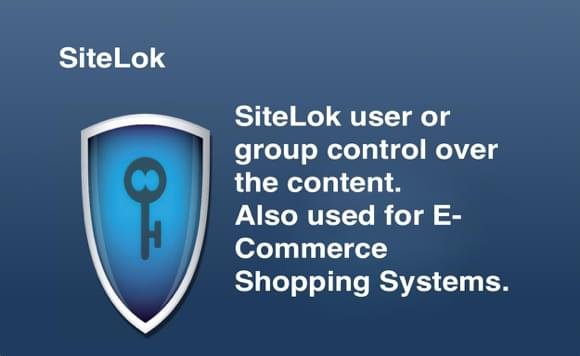 2. Membership Management: You can create multiple membership levels or tiers with different access permissions and pricing options. Sitelok provides tools to manage memberships, including adding, editing, or deleting users, upgrading or downgrading memberships, and setting expiration dates.3. Content Protection: Sitelok enables you to restrict access to certain pages, posts, or content based on user roles or membership levels. You can protect individual pages or entire sections of your website, such as member forums, premium articles, or downloadable files.4. Integration: Sitelok integrates with various website platforms and content management systems (CMS), including WordPress, Joomla, Drupal, and others. It provides plugins, modules, or extensions to seamlessly integrate membership functionality into your existing website.5. Customisation: Sitelok offers customisation options to tailor the look and feel of login forms, registration forms, and member profiles to match your website's design and branding. You can customise email templates for user notifications and password resets.6. Security: Sitelok includes security features to protect user data and prevent unauthorised access, such as encryption for passwords and sensitive information, IP address restrictions, and CAPTCHA support to prevent automated bots.7. Payment Integration: Sitelok supports payment gateways and e-commerce platforms for selling memberships or subscription plans. You can accept payments securely through PayPal, Stripe, Authorize.Net, and other payment processors.8. Analytics and Reporting: Sitelok provides reporting tools to track user activity, membership sign-ups, login attempts, and other metrics. You can generate reports and analyse data to gain insights into user behaviour and engagement.Overall, Sitelok is a versatile solution for website owners who want to create a membership-based website or offer premium content to subscribers. It provides robust features for user management, content protection, integration, customisation, and security, making it suitable for various types of websites, including blogs, forums, e-commerce sites, and online communities.
2. Membership Management: You can create multiple membership levels or tiers with different access permissions and pricing options. Sitelok provides tools to manage memberships, including adding, editing, or deleting users, upgrading or downgrading memberships, and setting expiration dates.3. Content Protection: Sitelok enables you to restrict access to certain pages, posts, or content based on user roles or membership levels. You can protect individual pages or entire sections of your website, such as member forums, premium articles, or downloadable files.4. Integration: Sitelok integrates with various website platforms and content management systems (CMS), including WordPress, Joomla, Drupal, and others. It provides plugins, modules, or extensions to seamlessly integrate membership functionality into your existing website.5. Customisation: Sitelok offers customisation options to tailor the look and feel of login forms, registration forms, and member profiles to match your website's design and branding. You can customise email templates for user notifications and password resets.6. Security: Sitelok includes security features to protect user data and prevent unauthorised access, such as encryption for passwords and sensitive information, IP address restrictions, and CAPTCHA support to prevent automated bots.7. Payment Integration: Sitelok supports payment gateways and e-commerce platforms for selling memberships or subscription plans. You can accept payments securely through PayPal, Stripe, Authorize.Net, and other payment processors.8. Analytics and Reporting: Sitelok provides reporting tools to track user activity, membership sign-ups, login attempts, and other metrics. You can generate reports and analyse data to gain insights into user behaviour and engagement.Overall, Sitelok is a versatile solution for website owners who want to create a membership-based website or offer premium content to subscribers. It provides robust features for user management, content protection, integration, customisation, and security, making it suitable for various types of websites, including blogs, forums, e-commerce sites, and online communities.
- E-commerce
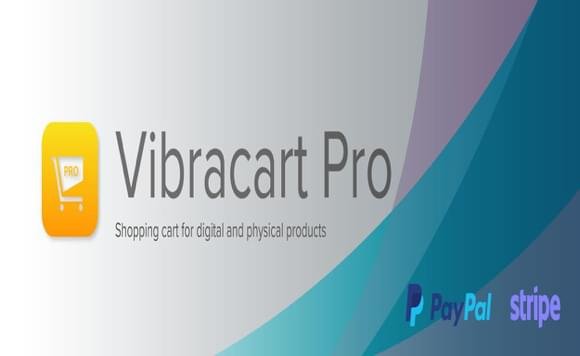
E-commerce, short for electronic commerce
E-commerce, short for electronic commerce, refers to the buying and selling of goods or services over the Internet. It encompasses a wide range of transactions, including online retail stores, digital products, subscription services, and business-to-business (B2B) transactions. E-commerce has become increasingly popular due to its convenience, accessibility, and global reach. Here's an overview of key components and considerations for setting up an e-commerce business:1. Platform Selection: Choose an e-commerce platform or solution that suits your business needs, budget, and technical expertise. Popular e-commerce platforms include Shopify, WooCommerce (built on WordPress), Magneto, BigCommerce, and Square Space.2. Product Selection: Determine what products or services you will sell online. Consider factors such as demand, competition, pricing, shipping logistics, and product sourcing.3. Website Design: Design a visually appealing and user-friendly website that showcases your products effectively. Pay attention to layout, navigation, product pages, checkout process, and mobile responsiveness to provide a seamless user experience.4. Payment Gateway Integration: Set up payment processing to accept online payments securely. Integrate payment gateways such as PayPal, Stripe, Square, or other merchant account providers to facilitate transactions.5. Shopping Cart and Checkout: Implement a shopping cart system that allows customers to add items to their cart and proceed to checkout. Optimise the checkout process for simplicity and convenience, minimising steps and reducing friction to complete purchases.6. Shipping and Fulfilment: Develop a shipping strategy and choose shipping carriers and methods that meet your business requirements. Offer options for shipping rates, delivery times, and tracking to provide transparency and flexibility to customers.7. Security and Compliance: Ensure that your e-commerce website is secure and compliant with data protection regulations such as GDPR and PCI DSS. Implement SSL encryption, secure payment processing, and data privacy measures to protect customer information and build trust.8. Marketing and Promotion: Drive traffic to your e-commerce website through various marketing channels, including search engine optimisation (SEO), social media marketing, email marketing, content marketing, and paid advertising. Create compelling product descriptions, images, and promotions to attract and retain customers.9. Customer Support: Provide excellent customer service and support to address inquiries, resolve issues, and build customer loyalty. Offer multiple channels for communication, including live chat, email, phone support, and self-service resources such as FAQs and knowledge bases.10. Analytics and Optimisation: Track website performance, sales metrics, and customer behaviour using analytics tools such as Google Analytics. Analyse data to identify trends, optimise marketing strategies, and improve the overall e-commerce experience for customers.Launching and managing an e-commerce business requires careful planning, execution, and ongoing optimisation to succeed in today's competitive online marketplace. By focusing on these key areas, you can create a successful e-commerce venture that attracts customers, drives sales, and grows your business over time.
- Tidy Cal Booking Sytem
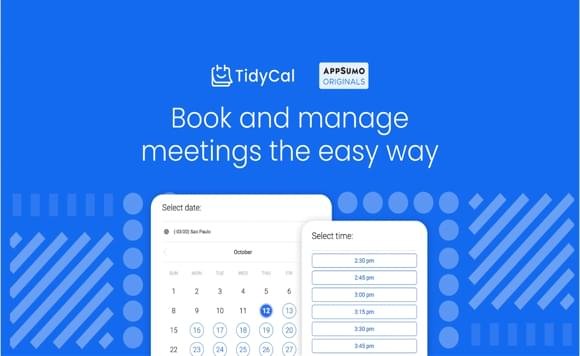
Tidy Cal Create unlimited Booking Types for every style of meeting—one-on-one, group
Create unlimited Booking Types for every style of meeting—one-on-one, group, paid, free, and so much more.
This app integrates with Google Calendar, Apple iCal, and Microsoft 365 Calendar, to read your calendars for your real-time availability and automatically sync new bookings.
The Zoom and Google Meet integrations generate meeting URLs and add them to the calendar invite on autopilot.
Plus, it’s a cinch to pay and get paid with Stripe and PayPal integrations.
TidyCal pages are optimised for conversions on both desktop and mobile for a seamless experience. TidyCal lets you set your default weekly availability or choose specific dates as available or unavailable to make sure your leads and clients are booking you at the right times.
You’ll be able to specify time blocks of availability and add gap times, so you can take a break in between meetings. Taking time off?
You can also exclude certain dates you’ll be unavailable for every booking type.
TidyCal will automatically scan up to 10 of your integrated calendars so your availability is always accurate. Easily change your availability and manage preferences on one simple interface. Share your custom booking pages via links or embeddable widgets right on your website, so your leads and clients can book meetings in seconds.
All for a one-time cost of £100 with setup
- Image optimisation
Image optimisation is the process of reducing the file size of images without significantly sacrificing image quality. It's an important aspect of web development and digital marketing, as it can improve website performance, user experience, and search engine rankings. Here are some key techniques and best practices for image optimisation:
1. Choose the Right File Format: Select the appropriate file format for your images based on their content and intended use. Common image formats include JPEG, PNG, GIF, and WebP. JPEG is suitable for photographs and complex images, while PNG is ideal for images with transparency and sharp edges. GIF is best for simple animations, and WebP offers superior compression for web images.
2. Resize Images: Resize images to the exact dimensions needed for display on your website or digital platform. Avoid uploading excessively large images and relying on CSS or HTML to resize them, as this can slow down page loading times. Use image editing software or online tools to resize images before uploading them.
3. Compress Images: Compress image files to reduce their file size while maintaining acceptable image quality. There are various compression techniques and tools available for this purpose, including lossy compression (which sacrifices some image detail for smaller file sizes) and lossless compression (which reduces file size without compromising image quality). Popular image compression tools include Adobe Photoshop, ImageOptim, TinyPNG, and JPEG Mini.
4. Optimise Alt Text: Include descriptive and relevant alt text for images to improve accessibility and SEO. Alt text provides a textual description of an image for users who cannot view images (e.g., visually impaired users using screen readers) and helps search engines understand the content of images for indexing purposes.
5. Enable Lazy Loading: Implement lazy loading for images to defer the loading of images until they are needed (e.g. when they come into view as the user scrolls down the page). Lazy loading can improve page loading times and reduce bandwidth usage, especially for pages with multiple images.
6. Use Responsive Images: Serve responsive images that adapt to different screen sizes and devices. Use the srcset attribute in HTML to specify multiple image sources with different resolutions or sizes, allowing the browser to choose the most appropriate image for the user's device and viewport size.
7. Optimise Image Delivery: Use content delivery networks (CDNs) to optimise image delivery and caching. CDNs store copies of your website's images on servers located closer to users, reducing latency and speeding up image loading times for visitors from different geographic locations.
8. Regularly Audit and Optimise: Periodically audit your website's images and optimise them for performance. Remove unused or redundant images, replace large images with smaller alternatives, and update image optimisation techniques based on evolving best practices and technologies.
By implementing these image optimisation techniques, you can enhance website performance, improve user experience, and achieve better search engine rankings, ultimately driving more traffic and engagement to your website.
Such google for image optimisation, PNG's are great regarding the background and the most important thing is the file size, as this will impact on site load times. Especially on Mobile devices.
Some Useful links regarding online and software to alter images and get free images.
https://www.photoroom.com/tools/background-remover
https://imagy.app/split-image/
https://unsplash.com/?account_status=confirmed



